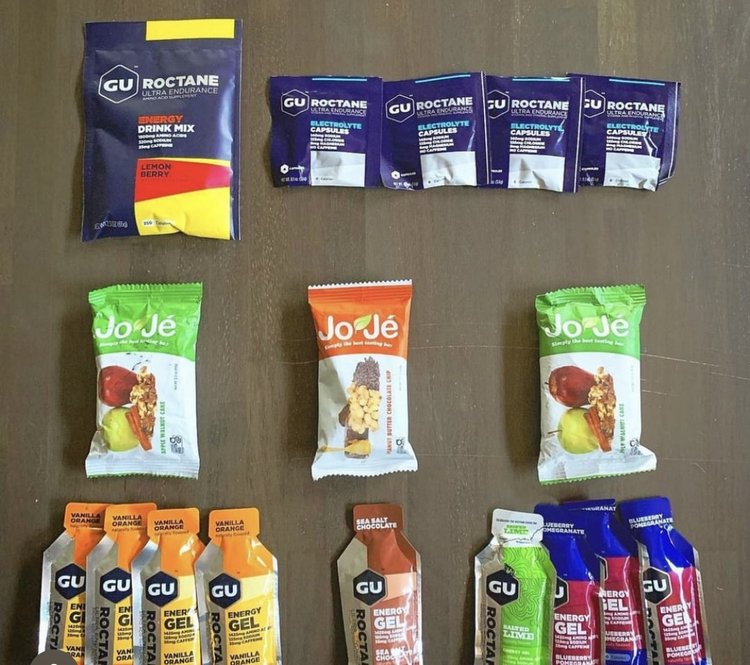August 25, 2022
What to Eat on Gravel Rides

Tough terrain uses more energy and drains your tank faster. Here’s how to fuel to keep going.
Bonking. Cracking. Gut rot. Nothing derails a big day out on the bike quite like running out of fuel…or maybe worse, not being able to get food down (see also: gut rot). Nutrition mishaps are probably the most common mistake gravel riders make because it’s easy to slip up and not realize it…until it’s too late.
Here’s what you need to know.
GRAVEL RIDING BURNS LOTS OF ENERGY.
This is a biggie. Riders often underestimate how much energy they’re using on gravel rides, especially if they’re coming from the road. You’ve got bigger tires on rough surfaces, so pedaling takes more work. Even coasting and descending burns through calories as sketchy surfaces demand mental focus and force your upper body and core muscles to work overtime to keep the bike steady. You’re also out there longer over any given distance because it’s slower going. That means you need to eat more. Aim for about 150 to 250 calories an hour (200 is a nice round number to shoot for) for events over an hour. Practice this in training so it becomes a habit, and your gut becomes better at absorbing a higher volume of food during activity.
THINK SMALL AND STEADY.
It’s more challenging to digest food when you’re working hard. Make it easier on your system by taking small bites of food frequently. So instead of eating a whole bar at the top of the hour, break it into smaller bites to have every 20 to 30 minutes.
YOUR GUT CAN ONLY TAKE SO MUCH SUGAR.
Your gut has a limited number of receptors, which are like cellular taxi cabs that shuttle sugar from your intestine into circulation, and different sugars (i.e., glucose and fructose) use specific transporters. When those are all full, you get a traffic jam in your gut, which is as fun as it sounds, leaving you with bloating and nausea instead of energy. Eat real foods with a blend of macronutrients and sugars to avoid overloading any specific receptors and ending up with stomach upset. On very long rides (i.e., over 5 hours), save the chews and simple sugars for the latter part of the ride when fatigue sets in and you may lose your appetite.
HYDRATION KEEPS DIGESTION HUMMING.
Dehydration hinders digestion and leaves you vulnerable to heat stress, which can cause nausea and, if it gets bad enough, vomiting. You don’t want any of that. As a general rule, drink about 24 ounces (or one big bike bottle) per hour, depending on how hot it is and how hard you’re working; you may drink a bit less when it’s cool and more when it’s hot. Drink small amounts in frequent intervals to maintain steady hydration. Use a hydration drink that contains some sodium and a small amount of sugar to assist with fluid absorption. Plain water can end up just sloshing in your gut.
REMEMBER NOTHING NEW ON EVENT DAY.
If you haven’t practiced riding 50 miles on bananas, Oreos, and some hydration mix you never heard of, don’t try it for the first time at your big event because it’s convenient and that’s what they have at the aid stations. Do a little research to see what hydration mix they’ll have on course and practice with it or bring your own for refills. Eat only foods you’re familiar with that you’ve ridden on before. Your stomach will thank you!


 Outspoken Women in Triathlon Summit Returns Bigger than Ever
Outspoken Women in Triathlon Summit Returns Bigger than Ever  Driving the Lamborghini: Productivity and the Power of Paper
Driving the Lamborghini: Productivity and the Power of Paper  5 take aways from the Compete Sports Diversity Summit
5 take aways from the Compete Sports Diversity Summit  Simple Tips to Hone Your Bike Handling Skills
Simple Tips to Hone Your Bike Handling Skills 

